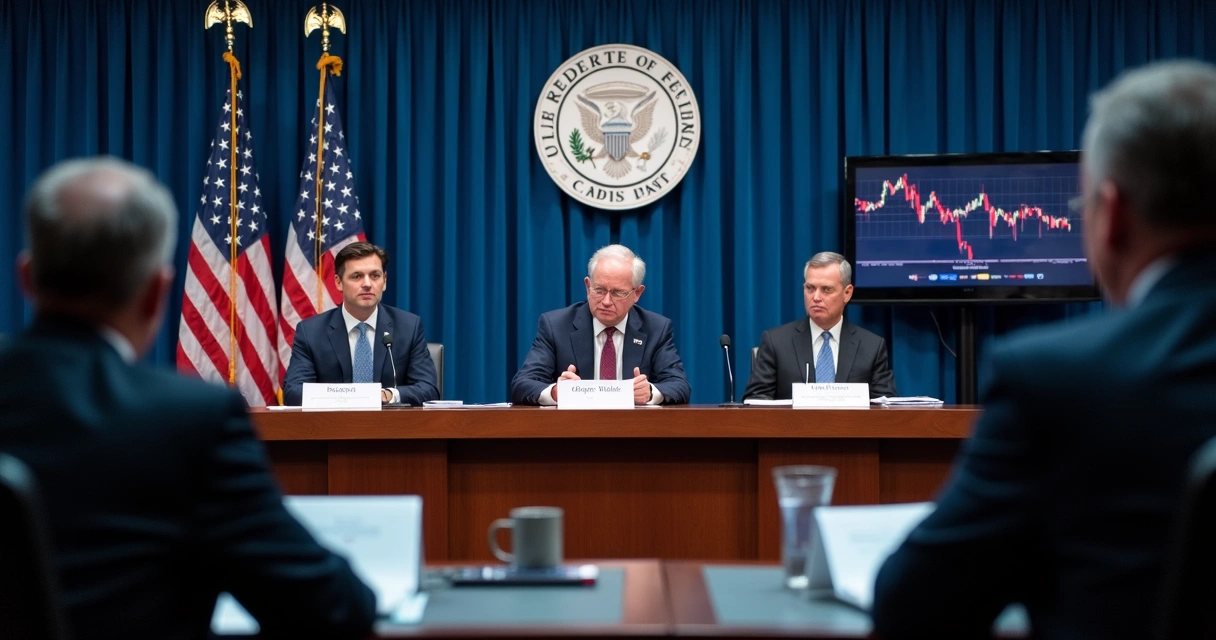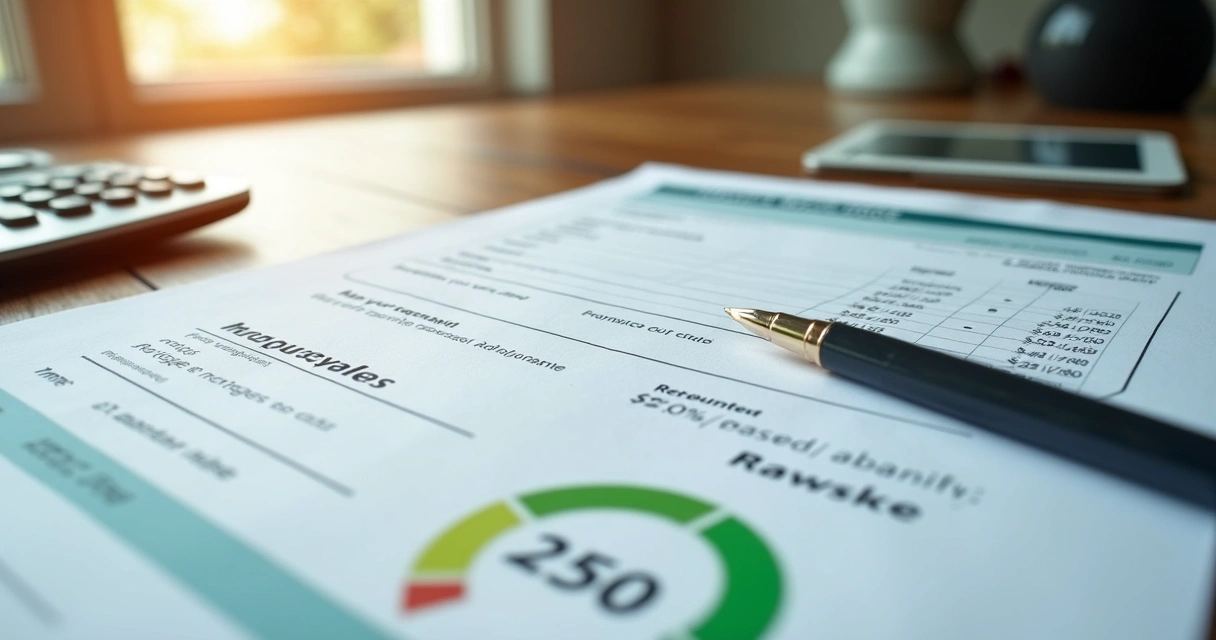Sometimes, I think about the first time I tried to figure out why my dream home felt just out of reach. It wasn’t about the color of the walls. It wasn’t the open kitchen or the little patch of lawn outside. It was really the mortgage—more specifically, the invisible force behind the numbers: interest rates. Whether you’re buying your first place, refinancing, or just puzzling over housing news, you’ve probably wondered how rates can make a home affordable (or suddenly, not).
Small changes in rates echo loudly in your monthly payment.
So, what exactly happens when interest rates swing up and down? I’ll break this down from what I’ve seen, learned, and sometimes, struggled with myself. In this article, I’ll connect the dots from Federal Reserve decisions to your wallet—using real data, some practical tips, and insight from working with people who turn to Heart Mortgage when the bank doors don’t seem open.
What is a mortgage interest rate?
The mortgage rate is the price you pay on borrowed money for your home. When you borrow from a lender, the interest rate is the cost added to the principal (the amount you’re loaned). It shows up in your monthly payment and, over decades, it shapes the real total you’ll pay back. And yes, even a half percent can make a difference that hurts—or helps—the family budget.
If you’re wondering why people chase lower rates so fiercely, it’s because each fraction of a point can either save or cost you thousands across the life of a mortgage.
Why do interest rates change?
I’ve watched rates bounce, sometimes gently, sometimes like a beachball in a storm. At the core, the answer is economic policy—especially moves by the Federal Reserve (the Fed). When they want to cool inflation or keep the economy healthy, they shift the federal funds rate. Lenders, in turn, adjust their own rates.
There are a few major players affecting what you see when you check mortgage rates:
- Federal Reserve monetary policy announcements
- Long-term Treasury bond yields
- Broader economic indicators—employment, growth, inflation
- Bank risk assessments, your credit score, and even loan type
According to the Federal Reserve’s July 2024 Monetary Policy Report, for example, each move on the federal funds rate flows directly into the rates we see on new 30-year fixed mortgages.

How rates influence home buying power
If you take nothing else from this section, remember:
The lower the rate, the more house you can afford.
That’s not just something I’ve heard from clients—data backs it up. The Consumer Financial Protection Bureau found that between January 2021 and October 2023, the average 30-year fixed rate ballooned from 2.65% to 7.79%. On a $400,000 mortgage, that single change pushed monthly payments up nearly 78%, from $1,612 to $2,877.
When rates jump up, many buyers simply can’t qualify for the same loan size—they must settle for less home, or wait.
During that same period, the median price of a home climbed from $355,000 to $423,200. So it isn’t just the interest rate; it’s the double-punch of higher prices and steeper borrowing costs, squeezing affordability for families and first-timers.
From my own conversations, I know this math isn’t theoretical; it’s the difference between getting your offer accepted, or staying in your current rental for another year hoping things will get better.
Monthly payments: The impact of rising and falling rates
To make sense of how interest shapes your monthly budget, let’s look past the sticker price of a home and focus on long-term costs.
If the interest rate rises by just 1%, the monthly payment on a $350,000 home (30-year fixed) jumps roughly $200. That’s money you don’t save, money you can’t spend elsewhere.
Recent research from the Federal Housing Finance Agency illustrates this, pinpointing a 23% hike in average monthly mortgage payments—from $1,400 to nearly $1,800 between January 2019 and January 2024.
A rate rise can cost you more each month, and a rate drop can ease your budget.
Fixed-rate vs. adjustable-rate mortgages
Understanding the differences between fixed and adjustable loans takes some patience. Fixed-rate mortgages keep your payment steady through the whole term—usually 15 or 30 years. Adjustable-rate mortgages (ARMs), however, start low but can move with the market after a set period.
- Fixed-rate: Stability, no surprises. Best when you plan to stay put, or when rates are low.
- Adjustable-rate (ARM): Tempting initial savings. But your payment can rise sharply when the adjustment period hits, especially if market rates climb.
Sometimes, families pick an ARM because they expect to move or refinance before rates adjust. I’ve seen some gamble and win, but others feel real regret if rates spike. For a full breakdown, Heart Mortgage explains both options with easy examples at fixed vs variable mortgage rates: which to choose.
What does the Fed actually do?
The Fed’s job isn’t just to move numbers around; their decisions send ripples through almost every financial transaction in the country. In its November 2024 meeting minutes, the Fed made it clear: longer-term Treasury yields affect mortgage rates, raising costs for households.
It’s not always easy to see. Sometimes, headlines about inflation or economic uncertainty hide the fact that, behind the scenes, the Fed is adjusting benchmarks that banks use to set home loan rates. These shifts are almost always felt several weeks or months later at the consumer level.
A Federal Reserve Board research note even highlights that abrupt rate changes (so-called “shocks”) can affect the U.S. homeownership rate.
When the Fed acts, the real estate market shifts.
How higher or lower rates affect the entire real estate market
It’s not just buyers who feel the pressure. When rates climb, the whole market reacts:
- Home sales slow down, as more people can’t afford the new cost
- Sellers may need to lower prices, or homes sit longer on the market
- Builders could put new projects on pause—less demand means less incentive
- People with good rates stay put, making housing inventory tighter
- In places where rent is high but mortgages are even less affordable, renters become “stuck”
When rates fall, things can pick up quickly. I’ve watched neighborhoods go from quiet to “for sale” signs vanishing overnight, just because borrowing money got cheaper.

The hidden cost: Total interest paid over time
Most people watch the monthly payment, but the real “sticker shock” comes when you add up total interest. For example, on a $300,000 mortgage at 3%, you’ll pay about $155,332 in interest over 30 years. At 6%, that interest grows to around $347,515—nearly a whole house worth of extra cost.
The difference in total interest could buy you another property.
You can run your exact numbers on sites like Heart Mortgage’s mortgage calculator.
Refinancing: Gaining control when rates change
I’ve seen homeowners panic when rates drop after they buy. The answer isn’t always frustration—it’s refinancing. By swapping your high-rate mortgage for one at a lower rate (or a shorter term, or for better terms generally), you could shrink your monthly outflow or the total paid over the years.
Some folks I know hesitated at first; the paperwork can sound daunting, but the math is persuasive. If your rate is much higher than today’s, or your personal credit has improved a lot, it might be worth looking at. You can learn more about when it makes sense or how the numbers work in Heart Mortgage’s guide to refinancing.
Credit scores and getting a better rate
This is the part I wish someone had stressed to me early on: strong credit can save you more than just bragging rights—it gets you access to the best advertised rates. Lenders, naturally, prefer to loan to those with steady payment histories, low debts, and enough income cushion.
- People with credit above 740 usually unlock the top rates
- Scores in the 620-700 range pay more, sometimes much more
- Major red flags—late payments, big balances—can even mean loan denial
If your score isn’t where you want, focused steps—paying down debts, making payments on time, checking your credit report for errors—make a difference over time.

Wider economic impacts of mortgage rates
You may wonder why the focus on rates is so fierce in economic news. A hike or drop doesn’t just hit homebuyers, it shakes other markets:
- Consumer spending drops as people pay more on housing, leaving less for other needs
- Business investments slow—construction, renovation, even related retail
- Government tax receipts shift, especially in areas reliant on home sales and values
- The homeownership rate changes shape, according to studies mentioned by Federal Reserve economists
It’s a feedback loop: mortgage rates influence the market, the market influences policy, and the cycle continues.
Fixed, variable, and special programs
I’ve worked with clients at Heart Mortgage who found innovative solutions. Some qualify for special conventional programs, which sometimes let buyers lock in smaller down payments or qualify with non-standard income. You can check the practical summary on conventional mortgage options.
The main thing is: Understand how each type of product will behave if rates change. Ask your advisor for plain-language breakdowns—steady fixed, flexible ARM, or government-backed products—so you’re not surprised later.
Buying strategy in a fast-changing rate environment
Honestly, I’m not sure there’s ever a “perfect” time for most families. What matters is making the best choice with what you can control.
- Review your own finances honestly. Figure out what payment you can really handle, not just the maximum approved.
- Shop multiple lenders and programs. Rates (and costs) can vary, and strong advice helps you see which options fit you best.
- Stay informed with updates from sources like the Heart Mortgage blog’s mortgage rates section.
- Prepare paperwork so you can move fast if a great rate pops up. Sometimes delays cost more than you’d expect.
- Remember, a slightly higher rate today is sometimes wiser than waiting and watching prices rise faster than your savings can keep up.
I’ve seen buyers “wait for the dip” and miss out, and I’ve seen bold choices pay off. Like everything with money, hindsight always seems perfect.
Payoff acceleration: Beating interest at its own game
One thing I suggest, if financially possible, is to pay a little extra on your payment each month. Even a small overpayment, when done regularly, can shave years off your loan and save thousands in interest. Just be sure your lender doesn’t penalize early repayments.
- Round up: Pay $100 or $200 more monthly if possible
- Make biweekly payments: 26 per year instead of 12 monthly
- Apply bonuses or refunds directly to your principal
Small, steady extra payments help reduce both total interest and loan term—faster than you might think.

Tips for navigating rising and falling rates
- Keep your credit strong. Before shopping around, check your credit report and correct errors.
- Pay down existing debt. Less debt means better offers from lenders.
- Save for upfront costs. Bigger down payments can help you avoid high upfront fees or private mortgage insurance.
- Know your loan options. Don’t just default to what’s familiar—ask about different terms or programs through sources you trust, like Heart Mortgage.
- Track both rates and home prices. Sometimes, a slight uptick in rates is more than offset by negotiating a better price on the home.
Conclusion: Turning knowledge into power with Heart Mortgage
It’s funny; the more I work with clients and research the topic, the more I see how personal a mortgage journey is. But no matter where you start, understanding the mechanics of interest rates puts you back in the driver’s seat. Small changes echo loudly—sometimes reshaping the whole meaning of “home.” Heart Mortgage helps people not only survive but succeed amidst these changes, guiding you through details other lenders might gloss over. If you want to know more or see how shifts in the market could open (or close) doors for you, start with a conversation. Your next move might be closer than you think.
Frequently asked questions
How do interest rates affect mortgage payments?
Your interest rate determines the portion of each monthly payment that goes toward interest versus the actual loan amount. Higher rates increase your monthly obligation and total interest paid over the term, while lower rates make payments more manageable and reduce what you owe overall.
What causes mortgage interest rates to change?
Interest rates fluctuate due to many factors—mainly, the Federal Reserve’s monetary decisions, changes in bond markets, inflation expectations, and shifts in the broader economy. Lenders react to these signals to manage their own risk and profitability, adjusting what borrowers pay accordingly.
Is it better to wait for lower rates?
It’s hard to time the market. Waiting for a lower rate can pay off—but while you wait, home prices or rents might increase faster than your gains from a reduced rate. In my experience, acting when you’re financially ready usually works out better than holding out for the perfect deal that may never come.
How can I get the best mortgage rate?
Improve your credit score, reduce your debt, increase your down payment if you can, and compare offers from different lenders. Also, certain conventional loan programs, like those explained by Heart Mortgage, may offer better terms if you qualify.
What happens if rates go up after I buy?
If you have a fixed-rate mortgage, your payment stays the same, no matter what the market does. If you chose an ARM or plan to move soon, rising rates could affect your payment after the initial period. Refinancing in the future is an option if rates drop, helping you adjust as market conditions change.





